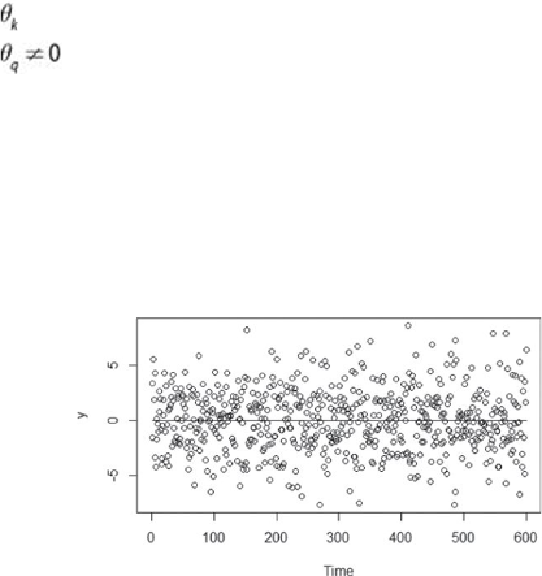Database Reference
In-Depth Information
where
is a constant for k = 1, 2, …, q
for all t
In an MA(q) model, the value of a time series is a linear combination of the
current white noise term and the prior q white noise terms. So earlier random
shocks directly affect the current value of the time series. For MA(q) models, the
behavior of the ACF and PACF plots are somewhat swapped from the behavior
of these plots for AR(p) models. For a simulated MA(3) time series of the form
where
,
Figure 8.5
provides the
scatterplot of the simulated data over time.
Figure 8.5
Scatterplot of a simulated MA(3) time series
Figure 8.6
provides the ACF plot for the simulated data. Again, the ACF(0) equals
1, because any variable is perfectly correlated with itself. At lags 1, 2, and 3, the
value of the ACF is relatively large in absolute value compared to the subsequent
terms. In an autoregressive model, the ACF slowly decays, but for an MA(3) model,
the ACF somewhat abruptly cuts off after lag 3. In general, this pattern can be
extended to any MA(q) model.





